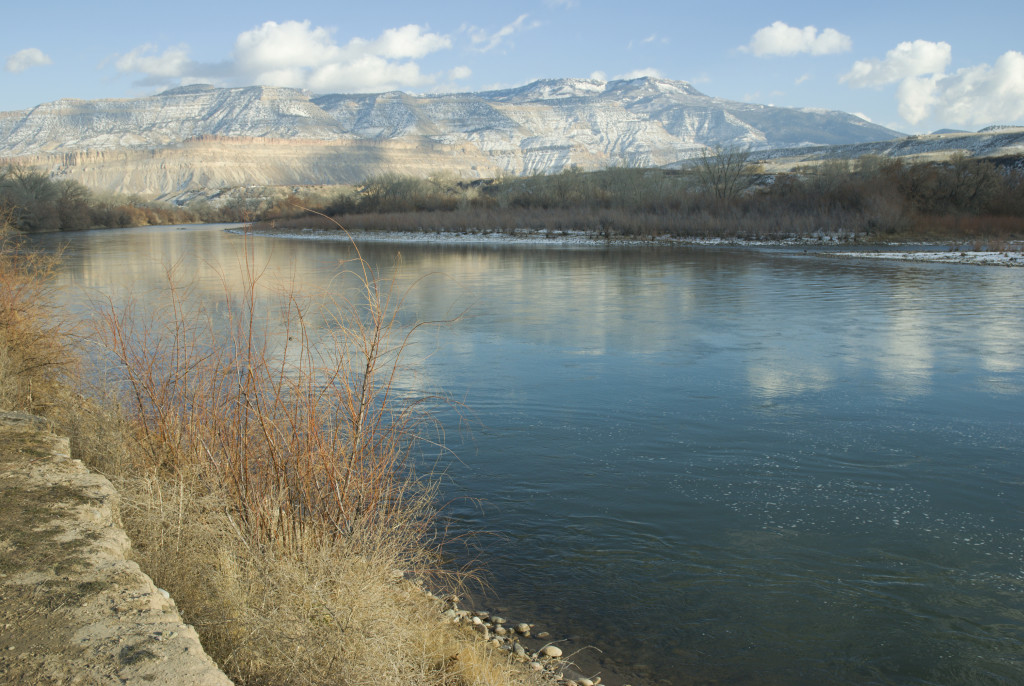
Thirteen years removed, the 2002 drought is still a fresh memory for those who make water their business.
It’s a reminder of where Colorado could be with one drought, the pain agriculture and other water intensive industries would feel and the impact a drought may have on a state popular for attracting people and businesses.
Add to that pressure climate change, rising temperatures and a population that is expected to double by 2050. Those challenges could leave Colorado facing a 163 billion gallon shortfall by that same time.
While that doesn’t mean that the faucets would stop running, it would amount to a worst-case scenario for Colorado.
“We really need to think about not so much whether we’re going to grow but how we’re going to grow and how we can do that sustainably in a way that preserves the attractiveness of what’s bringing people to Colorado in the first place,” said Denver Water CEO and Manager Jim Lochhead.
So when the governor asked his team for a white paper on water in Colorado, he was surprised when they looked around the table and said they didn’t have one, recalled Colorado Water Conservation Board Director James Eklund. That request put the state on a path to draft the first-ever water plan. After years of meetings and drafts, the final document will go to Gov. John Hickenlooper in December.
But what business leaders want to see most in the plan is a roadmap—an outline of measurable goals that will give the governor and the state and path forward. Because finalizing the plan is just the beginning.
Businesses Ask for Benchmarks Across the Board
Water needs will double with population growth. Business leaders are calling for goals in the water plan that will take a comprehensive approach, considering conservation, efficiency, land use and storage.
At the Denver Metro Chamber of Commerce’s State of Water event on Oct. 8, President and CEO Kelly Brough outlined specific goals the business community hopes to see in the plan:
More than 400,000 acre-feet reduction in industrial usage of water. The current draft of the plan calls for this reduction—essentially enough to fill Chatfield Reservoir a little more than once.
Brough also called for solutions beyond conservation in green infrastructure that will capture rainwater, reuse graywater and utilize stormwater.
A focus on storage. That means, Brough said, 100 percent completion of all identified water storage projects and developing goals around more storage while protecting the environment, streams and industry.
“The best conservation is storing water when you get it,” said former Colorado Commissioner of Agriculture Don Ament.
A streamlined permitting process for water projects going forward. That could mean one state agency would be the lead on a water project, which often includes local and federal governments. It’s a process that has a reputation for moving more like molasses than a rushing river. The permitting process to expand Gross Reservoir has taken 13 years and is still going, Lochhead said, adding, “It’s not acceptable to take that long to get permits for needed infrastructure.”
A connection to land use issues. Identifying a sustainable water source before new development projects are approved, denser development and better communication among developers and water planners could help manage the double-whammy of growth and water shortfalls. It’s a necessary alignment, said Colorado River District General Manager Eric Kuhn: “There’s a disconnect in this state between land use and water use.”
Increasing water efficiency in agriculture. Throughout the conversations around water and the state plan, there was an interest in preserving the agricultural heritage in the state. It was something that surprised Robert Sakata, whose Sakata Farms dots 2,500 acres along the South Platte Valley.
He agrees conservation is important and is hopeful that innovation with GPS and remote sensing will allow farmers to be more thoughtful in their irrigation strategies. “We can better apply water specifically where it’s needed,” he said.
In addition to being more efficient, Brough stressed the importance of creating more flexibility in water sharing between agriculture producers and urban areas. That way, farmers may be able to sell some rights and still work their land, instead of the current practice of buy and dry, where farmers sell their water rights, often to municipal water utilities, and no longer farm.
“(Farming) is a big contributor to the Colorado economy,” Ament said. “More important than that, it’s our food supply.”
With those goals, Brough said, there are measurable outcomes that can provide a meaningful starting path for water management in the future.
“There is a real cost to doing nothing when it comes to water,” Brough said. “We cannot afford it.”
Mizraim Cordero, the Denver Metro Chamber of Commerce’s vice president of government relations agreed, saying going forward “will require a new level of collaboration and a new level of sacrifice.”
A Seat at the Table
Hundreds of public meetings and thousands of public comments coalesced conversations around water. The Chamber and its affiliate, the Colorado Competitive Council, engaged leaders of businesses of all sizes from across the state in eight meetings of its own in the last year. That feedback informed water principles from the business community and the organizations’ comments on the draft of the state water plan.
Eklund said he was giddy over his office receiving some 30,000 comments. Getting everyone in the room together to talk about water needs was something that participants described as an eye-opening experience.
“It’s so important to see other people’s perspectives,” Sakata said.
Work Just Beginning
Those working and providing input on the plan agree that getting it finalized is just the first step. It will require executive orders or legislation to make these ideas stick.
“Good planning never ends, but the implementation is much more difficult than the development,” Kuhn said. And, these plans will require funding. How much, and how projects would be prioritized, isn’t clear yet.
“I think unless we’re very, very specific on what we’re asking the voters for, it’s unrealistic to just say we need more money,” Lochhead said. “We also need to be targeted.” Eklund agreed.
“We know throwing money at this isn’t the answer,” he said.
Water planners and experts say the interest and input of the business community has brought a new perspective—and a focus on getting things done. They added that they hope the business community continues to stay involved.
“I think what the business community can do is inject a sense of urgency into this process,” Lochhead said.
And it’s a project that is really just getting started. “In that regard this plan is never really at the finish line,” Eklund said. “It’s a living document.”
Sara Crocker is the communications manager for the Denver Metro Chamber of Commerce.
